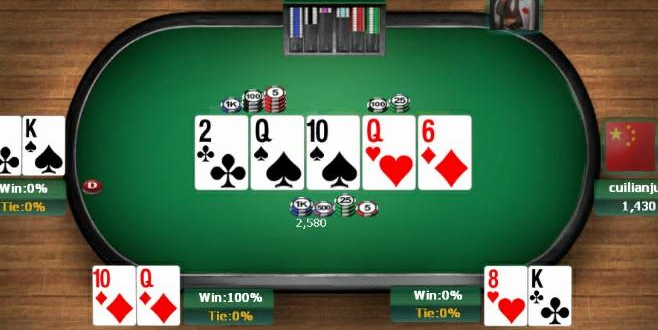If you’re a beginner learning poker, understanding the different positions around the table is essential. In both live and online poker games, each position holds varying degrees of power, and while players may not overtly vie for specific seats, many secretly hope for advantageous positions.
Every position is assigned a name and has its own set of advantages and disadvantages, significantly impacting a player’s performance, whether they are playing online or at a physical casino. A skilled poker player comprehends the implications of each seat and adapts their strategy accordingly.
Today, we’ll focus on the “hijack” position in poker. This article will provide a comprehensive overview of the hijack position in both online and live casino games, along with the corresponding strategies and ranges.
Poker Positions:
One of the most crucial aspects of any poker game is the positions, determining when each player acts and the sequence of play. This decides who has a positional advantage and who is “Out of Position” (OOP) – a player acting after others in any betting round.
At a nine-handed poker table, there are nine distinct positions:
Small blind
Big blind
Under the gun (UTG)
UTG+1
Middle position
Lojack
Hijack
Cut-off
Dealer (button)
After the flop, the poker game proceeds in a clockwise manner, starting with the small blind. Consequently, some positions are classified as early, some as middle, and others as late positions.
The hijack seat is directly to the right of the cut-off position and two seats to the right of the button (the last position). As a result, the hijack is the third-to-last seat, making it one of the late positions.
Players in the cut-off and button positions often begin raising their bets, as they have better reads on their opponents‘ hands. Late position players raise with the intention to steal blinds after observing their opponents’ moves.
Being in the hijack position offers an advantage, as players in this seat have witnessed the actions of those before them and can raise their bets before the cut-off and button players, even with less favorable hands. A pre-flop raise from the hijack position is typically respected, given its tight range, and is considered less likely to be a bluff compared to raises from the cut-off and button positions.
Such a raise can lead the cut-off and button players to doubt the strength of their hands, potentially diminishing their confidence in raising further. Consequently, they might decide not to raise, allowing the hijack player to seize the opportunity and steal the blinds.
Tips on Playing from the Hijack Position
[Rest of the article would discuss strategies and approaches for playing from the hijack position.]

The strategy employed in the hijack position relies on several factors, and there is no universal approach that guarantees success. The decision-making process revolves around the actions that have taken place during the hand. If there has been significant raising prior to your turn, it’s prudent to assume that those players possess strong starting hands. In such cases, it may be wise to play conservatively and fold middle-strength hands.
On the other hand, if the play has folded around you, or there has been only one open raise, then playing aggressively from any late position, including the hijack, becomes more viable. This is because you are likely to have the positional advantage if the game proceeds to the flop.
To illustrate different scenarios:
If there has been substantial action leading up to your turn: Fold your average starting hands and only proceed with your strongest hands.
If there has been one raise in front of you: Continue with your strongest starting hands and occasionally mix in bluff raises with your middling hands. This puts pressure on players in early positions, and even if they call, the hijack maintains the positional advantage on the flop.
If there has been no action before your turn: Take advantage of the situation and widen the range of starting hands you play. Raise frequently, as you are likely to get the opportunity to win the blinds and antes.
If you open-raise but the big blind, small blind, or button raises you: Evaluate the strength of your hand before making a decision. If the button has folded, remember that you’ll have a positional advantage post-flop against the blinds’ positions.
Hijack Ranges:
Now that we’ve discussed the general strategic outlook for the hijack position, let’s examine a few sample ranges. A range refers to the set of hands a player could be holding in a given situation. Here’s how to handle a couple of scenarios:
Hijack Defense vs. Lojack Open:
Defending against a lojack open is not too challenging, as these players typically open raise with smaller bets. The hijack position can defend with a wider range in this case. However, 3betting from the hijack is not favored, as the range is often weighted towards high-equity cards. Thus, it is generally not recommended to attempt a 3bet bluff in this situation, as players are less likely to fold when facing 3bets.
Hijack Defense vs. UTG Open:
Defending against an opening raise from the UTG (Under the Gun) position can be more challenging for the hijack. UTG players usually have a tighter range of strong hands, so the hijack should approach the situation carefully. While calling with some hands can be considered, it’s important to avoid overly speculative hands that may not play well post-flop.
In summary, the hijack position in poker requires a dynamic and adaptive strategy based on the specific circumstances of each hand. Understanding the actions of players before you and the relative strength of your starting hand will guide your decision-making process and increase your chances of success in this important position.

When facing an opening raise from the earliest position, the hijack position should adopt a more conservative approach and defend with a tighter range. This is due to the fact that, on average, the range of hands for an UTG raise-first-in will be stronger than that of an average lojack raise-first-in.
Regarding the hijack-first-raise-in range, it’s crucial to maintain a balanced approach in this position and avoid being overly aggressive or defensive in an attempt to steal the pot.


